The main reason why many people today turn to alternative energy sources for their homes is that it gives them independence and freedom. They no longer rely on energy sources provided by large companies and corporations, nor do they have to pay monthly only in order to be able to have light at home, use a computer or watch TV. Not only that, but renewable energy is far cleaner than the traditional one and has a better prospective in the future.
[the_ad_placement id=”in-text-1-type-r”]As we have a swiftly changing environment due to abusing the planet’s sources, more and more people are inclined to stop contributing to this abusive method, and find a way out and give their share to helping the environment.

If you want to commit yourself to a renewable energy source you may have to learn more about that. Also, you have to know that there are several types of renewable energies and before you decide to use one (or multiple) energy source, you must first dig a bit deeper into this sphere.
Types of renewable energy sources
The four main types of renewable energy sources, among which you can pick the one(s) that interest you most, and is/are suitable for your particular needs, are:
- Solar energy
- Wind energy
- Geothermal heating
- Solar thermal
- Micro-hydropower system
By solar energy we mean the energy produced by photovoltaic or, as is the more common name, solar panels.
These panels collect the sun’s energy and turn it into electricity, thus removing the need for power plants and so on. This method ensures that the energy you consume is clean and has absolutely no negative effect on the environment.
The only drawback with solar energy is that northern countries don’t receive enough sunlight throughout the day to produce enough electricity for everyday needs. Otherwise, this system requires very little maintenance. You only have to clean your solar panels now and then, since dust gathering on the panels prevents the full absorption of the sun’s energy.
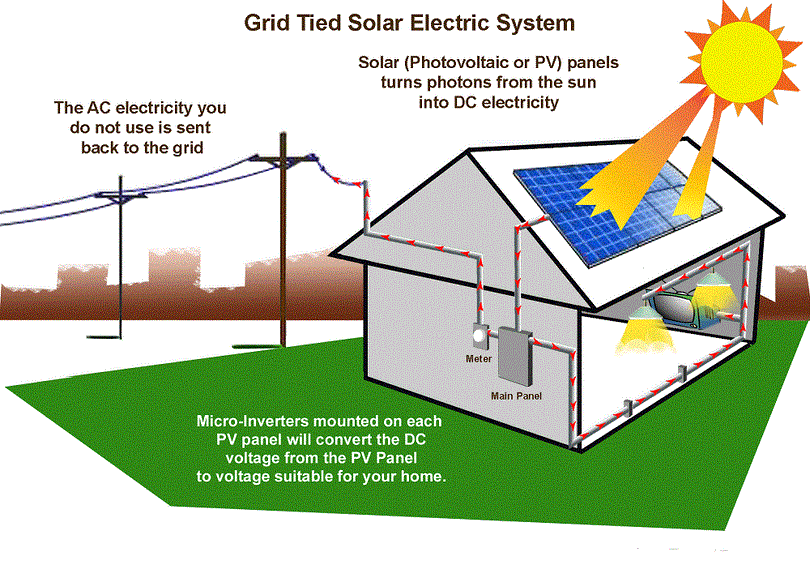
As a comparison, 1.5 kilowatt of energy will produce as much as 100,000 carbon dioxide pounds in the atmosphere, and keeping it for the next 25 years, until it’s recycled by nature’s own mechanisms. On the other hand, if you have a solar panel system, you will prevent the need to burn coal, thus reducing significantly the release of carbon dioxide in the atmosphere.
Also, solar panels give the option to be expanded as a system. You can keep adding more and more panels to your current system. They have up to 25 years warranty and are even bombproof. They are light and can weigh no more than 20 pounds. It won’t be much of a trouble to move them with you.
The only negative side currently is that it may be a bit pricey and the return-on-investment may be prolonged for many years. On the other hand, since solar panels are made of sturdy durable material it is quite possible that it will outlive you and you can leave it to your children or grandchildren.
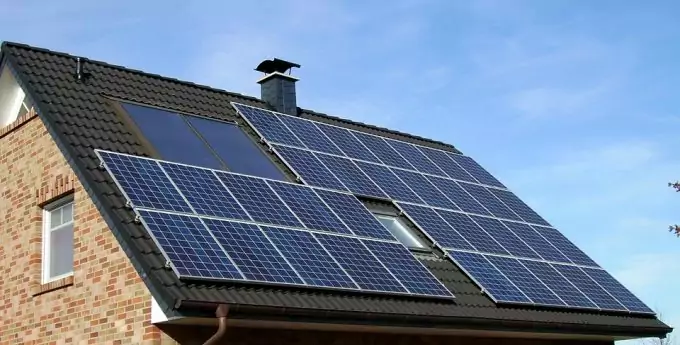
Here are the good sides of owning a photovoltaic system and attaching it to your household:
- It is more efficient. There is an inverter in the system, which keeps track of the maximum power curve, instead of tracking the needed voltage to charge batteries
- It is also much greener. You can already guess why – you don’t need batteries to run the system. Batteries contain chemicals, which can be dangerous if the battery leaks; they may emit sulfur and poisonous gases; they eventually wear out and by throwing them in the garbage, you contribute to further polluting the environment
- Solar panels are cheaper in comparison to how much money you must spend for batteries, chargers, controllers, control panels and even generators. This may cost you more than $5,000. This calculation of course is for people that live off-grid and need to setup an electricity system. However, a lot of that cost can be alleviated when you file taxes as most renewable energy installations (especially solar) are subject to tax breaks, credits, and deductions.
If you are already on the grid, it may be arguable why you would want to change to PV. The main reason should be future of your children and grandchildren. By staying on the grid, you continue to pollute the environment, by relying on dirty non-renewable energy sources, which pollute for hundreds of years ahead.
An interesting fact for solar panels is that, the energy and resources for the production of one solar panel is generated by the solar panel only within a few years, thus the solar panel pays its ‘debt’ in the context of greenhouse gas emissions quickly and then continues throughout its life to product only clean debt-free energy.
To find out how solar energy works and it benefits, see our vital article dealing with this topic.
[the_ad_placement id=”in-text-2-type-r”]Wind energy isn’t something new for the humanity. Hundreds of years ago, the wind has been used to generate energy and later electricity too.
A short history of the wind energy will get you to understand why it’s so powerful. Wind energy dates as far back as 5000BC. People used to sail on the Nile River and used wind to do so. Persians also used wind to help them pump water and produce flour. Cretans used wind to irrigate their arable land and feed their livestock.
This is why people in later years are reviving the idea for the wind power. Prices for setting the turbines and the production of wind energy have dropped, thus making it more accessible and tangible. More turbines have been built in the last decades, thus the capacity has grown exponentially. It is true that the current global power summed up doesn’t amount to something significant (the total wind power can provide electricity to three Miami cities), but it has definitely the potential to grow if companies pick up the idea and develop it.
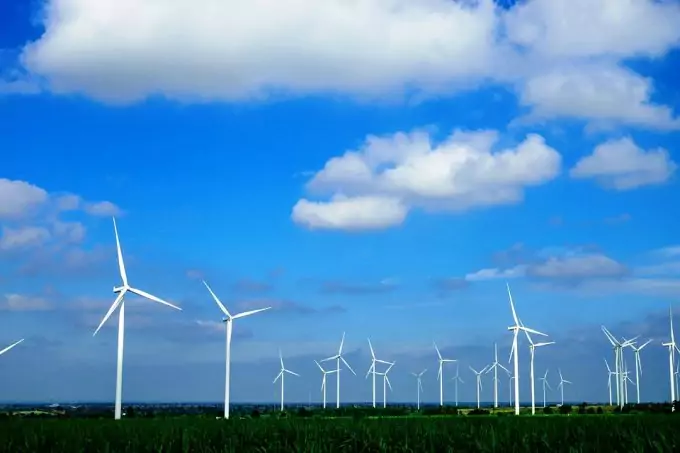
The only problem with wind power is that it requires large areas where to build the turbines. Besides, this is a very ‘diffuse’ energy and not as straight-forward as the solar radiation. Also, it’s a costly enterprise, due to more maintenance and material, which may mean higher end prices for households.
Overall, for the time being, wind energy and its efficient use and development has a long way to go until its potential is fully unfolded. It produces noise and can be even dangerous for birds and bats. Households are not advised to mount wind turbines on their houses for these purposes.
Yet, depending on whether you live in a windy area/country or not may determine whether having a household wind turbine is suitable for you or not.
More alternative sources of energy
Geothermal heating is based on the idea that thanks to a system, the household can be cooled or warmed thanks to the earth’s cycles and using earth’s own energy. To have this working properly you need a sub-surface heat conductor, which transfers the earth’s warmth to the household. So, during the winter your home will use the heat stored below the earth’s crust, while in the summer, the heat will sink under the surface, thus cooling your home.
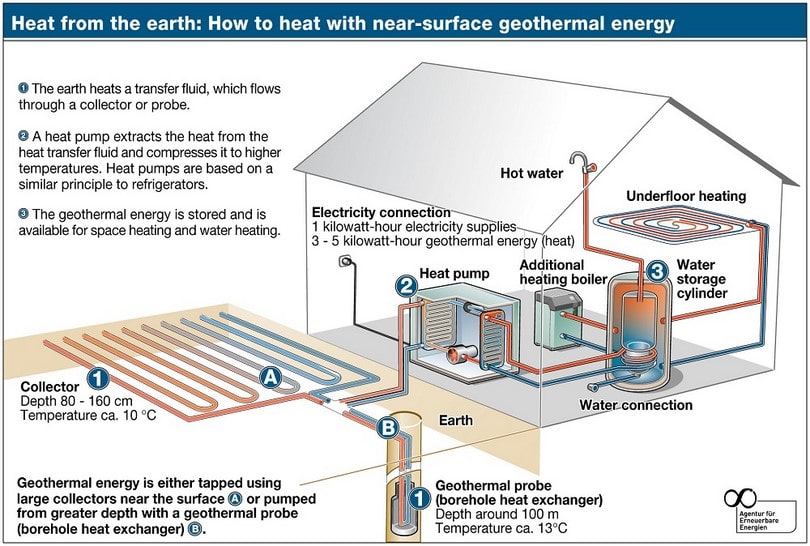
There is though a slight concern about this system, since it is not entirely renewable. The heat/cool pump needs electricity to run, and if that electricity doesn’t come from a renewable source, then the positive outcome from the geothermal heating system may be canceled/neutralized. On the other hand, if your electricity comes from solar or wind power, then having a geothermal system running through your household could be one of the most efficient sustainable systems.
The positive side of having a geothermal system is that the heat coming from the earth is a renewable resource and is clean. No gas emissions are going on in place while the system works (no combustion). This system is durable and reliable and can be used for up to 50 years. There is virtually no need for maintenance, although it’s advisable in order to prolong its life. And also, little noise is produced from the pump’s work, thus it won’t be bothering either you or your neighbors.
For more information on geothermal energy and its uses, see our article on this topic.
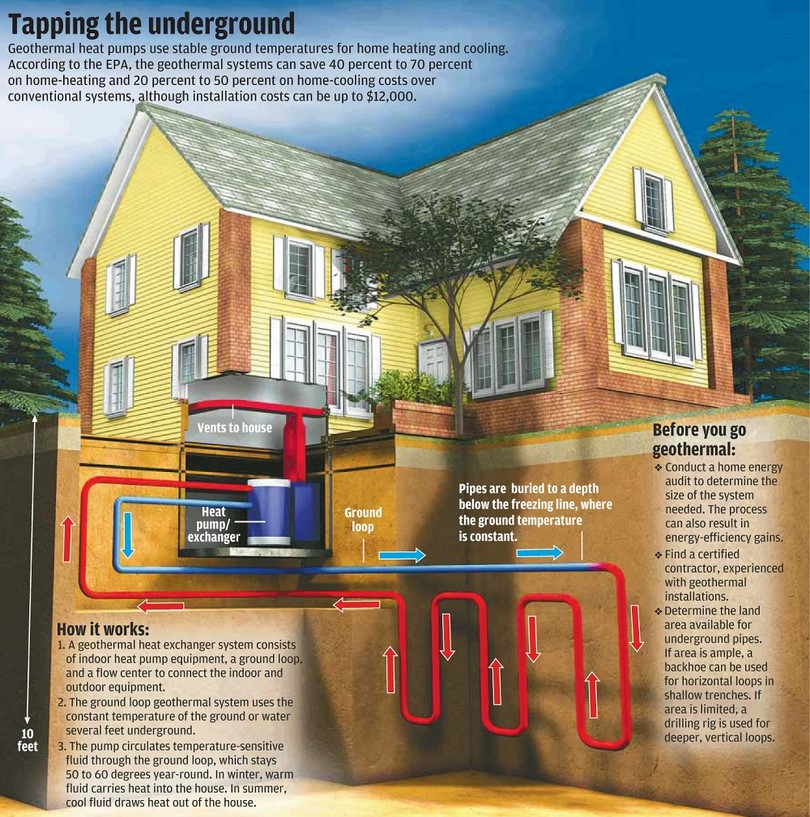
The drawbacks are that it’s an expensive set-up and can be quite pricey to install. Also, we already mentioned that it’s not efficient if you use conventional electricity sources (requiring coal burning). In some cases, the maintenance of some ground loop systems may be quite costly.
When it comes to solar thermal/heat energy, it is still in the beginning of its development. While it’s not as widely-spread and popular, its advocates believe it will pick up quickly very soon. The difference between the solar panels and the solar thermal technology is that the first uses the sun’s radiation to produce electricity and energy, while the solar thermal uses the sun’s heat. This means that the closer to equatorial and tropical areas the solar thermal is, the better and more efficient it will work.
Unfortunately, for the time being, solar thermal is an expensive technology and is only efficiently used in some southern states in the USA, Hawaii and Alaska. On the other hand, some countries in Europe begin to show interest, like Germany and Austria.
In Spain, some people have set up the so-called solar air-conditioners. This produces floor heating, warm water and air conditioning. Denmark has also picked up on the renewable energy race and has built a large construction with solar panels and solar thermal plants. As experiment, they are providing electricity and heat to 30% of the citizens of a small town in Denmark.
The future of solar thermal is bright, as it also gives the opportunity of distilling and purifying water, thus ensuring clean water for whole cities and towns. The only issue may be the storage. Since the heat and energy is collected during the warm seasons and used during the cold seasons, there must be a way to collect that energy efficiently and sustainably. For the time being, this is only possible through chemical storage, in the type of batteries or fuel cells.
Micro hydropower systems are efficient for homes and households nearby rivers and streams. Thus, if you live close to one, it may be best for you to build such a renewable energy system. Generally such a system produces 10 kilowatts per year, which can charge one average household and even small tourist resorts and farms. To set up this system you need to install pumps, turbine or a waterwheel on the basis of a rotary system.
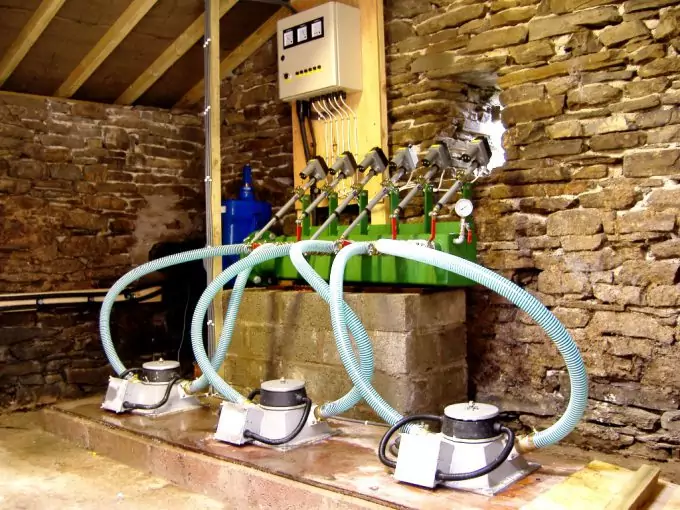
The idea behind the micro hydropower system is that it uses the energy produced by the flowing water. This type of sustainable energy is efficient due to minimal storage and space occupied for the system to work. Some systems require channels and pipelines, including in some cases pressurized pipelines (a.k.a. penstock).
Thanks to the endless water motion, the wheel rotates, spinning a shaft. This mechanical processes generate energy. If it is connected to a generator, electricity can be produced as a result. You can also connect the micro hydropower system to your main electrical grid.
Some systems may convert voltage currents from DC to AC. If you don’t own such a system, there are converters if you need a DC or AC plug.
[the_ad_placement id=”in-text-3-type-r”]If you use a stand-alone micro hydropower system, this means that you will need to store the accumulated energy in batteries (chemical storage). Due to the seasonality of micro hydropowers energy storage may be necessary. If you do rely on batteries for energy storage, it’s best to keep the batteries close to the turbines, where the energy is generated. This is because it is inefficient to transport low voltage energy over long distances.

Image credit: ecoevolution.ie
In the micro hydropower systems, we can also differentiate two types of turbines – impulse and reaction turbines.
Impulse turbines require the velocity of the water in order for the wheel to rotate. The turbine wheel is called runner. The impulse turbines can also have three categories – pelton, Turgo impulse wheel and Jack Rabbit turbines.
Reaction turbines are more efficient and require pressure for the production of energy. The turbine wheel is constantly in contact with the moving water, while in the meantime pressure keeps it in motion.
For more alternative sources of energy, see our article listing the top ones for your information.
Planning the renewable energy source system
Before you commit yourself to any of the above listed systems, you need to know a few details.
First, you have to make an in-depth analysis of the electricity consumption of your entire household. By doing this, you will know how much energy and electricity you tend to consume, thus decide which of the above systems would be more efficient for your needs. Also, take note on how much energy you spend through the day and night, that is, the energy fluctuations. Also, plan on how to minimize your energy consumption and reduce the cost.
To do all these steps you need to calculate your yearly wattage and overall daily load. Also, determine which appliances and devices consume more (or less) energy, which are more sustainable and which consume too much. Some appliances, for example, the refrigerator, uses electricity in intervals. This voltage load is considered selectable. You could for example, determine which of these selectable items, and devices can use energy only in certain times. If that is fine for you, smaller energy plant/source would be advised for your household.
If you can commit to a smaller installation, which is also cheaper and more efficient, you could definitely reduce your overall cost. Larger systems (e.g. thermal energy) for some cases may not be as efficient. But if you live nearby a river that could definitely be one of your best choices.
You may also have to consult the local electricity standards and what is allowed and what not. There are inspectors who can determine, which renewable energy systems are both efficient and safe for your area and household. Further inspection to the plumbing system may also be done.
Overall, you need to follow the National Electrical Code (NEC) in order to receive full permission to build alternative energy system. It is advisable to install ready-to-install systems, and also consult an engineer or inspector when it comes to the installation.
Finally, when all of these legal aspects are covered and approved, you can then spend some time on whether your preferred alternative energy system is available for your area. You need to determine your cost – both for purchasing and for the installation. You must get to know where and how it will be built (do you have to do any retrofitting to your house, or no changes will occur, or maybe it will be installed outside of your house).
How large would the system be? Take into account also the cost and time required to maintain the system. Check also how long it will be usable and whether you need to do some yearly upgrades or replacements.
You can also combine two or more sustainable energy systems to improve your ecological impact. A hybrid system is one combining for example water and wind energies.
As a whole, you need to do a lot of research to ensure you’re making the right choice and it will be optimal for your location, needs and law-compliance. As long as you spend time and get advice from professionals there is no way you can make a wrong choice?


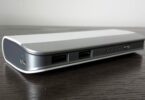
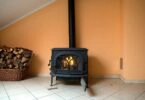
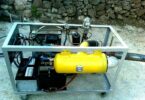
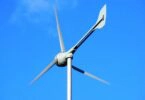
I would like to say that the best alternative source of energy for private houses in solar energy. My family set up solar batteries and they let us to save up to 40% of tax on electricity.
As for other sources of energy, they are not so acceptable because they take too much space and money. For solar batteries cost not so much and the period of payback is not so long.
Indeed, solar energy may be the most efficient alternative source, but you need to be in a sunny area to actually feel the difference. If you don’t have at least a few hours of sun every day, you won’t be able to make the system work for you.
Another possible source of alternative energy is kinetic energy. I have seen some homes that have bicycles attached to a dynamo that creates the electrical charge that gets stored in some 12V batteries. Pedaling for power is a nifty idea as it provides a good source of exercise as well. I also know of some who process used oil into usable fuels for traditional generators.
It is indeed, but this also means that someone should take care of “charging the house” which is definitely a difficult daily task.